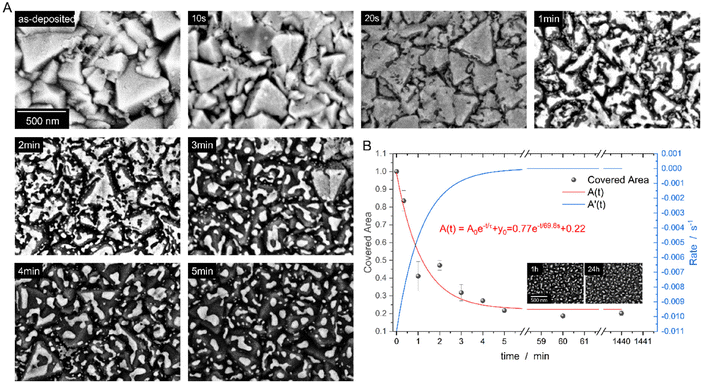The team of Marco Altomare, including Shreyas Harsha, Rakesh K. Sharma, and MemetTursun Abudukade (Department of Chemical Engineering, PhotoCatalytic Synthesis Group), in collaboration with TEM specialists at the Friedrich-Alexander-Universität Erlangen-Nürnberg, published in the Royal Society of Chemistry journal Nanoscale a new research article on "Role of polycrystalline F–SnO2 substrate topography in formation mechanism and morphology of Pt nanoparticles by solid-state-dewetting".
Read the full article: https://doi.org/10.1039/D5NR00729A
LinkedIn thread: https://www.linkedin.com/feed/update/urn:li:activity:7338930719911473153/
This work follows up their previous study in the Wiley journal Advance Functional Materials (https://doi.org/10.1002/adfm.202403628) and investigates how the topography of practical electrodes, such as electrically conductive polycrystalline oxide coatings, affects the formation mechanism and morphology of catalyst particles by solid-state dewetting – with potential use as nanoparticle electrodes, e.g., in electrochemical conversion or sensing applications.
By combining ex situ rapid thermal annealing experiments with plan-view sample preparation for in situ TEM analysis, the study provides unique insights into the initial stages of the dewetting mechanism of Pt thin films, even enabling to capture dynamics occurring within the very first seconds of dewetting and finally leading to formation of Pt nanoparticles.
Key aspects include:
• A bimodal Pt particle configuration develops, with small particles forming rapidly in depth in the grooves between the grains of the oxide substrate, while larger particles evolve over longer timescales on the surface facets of the oxide substrate, competing with Pt grain growth.
• The dewetting behavior of Pt is driven by (i) a reduced Pt film thickness in depth caused by shadowing effects during film deposition, and (ii) local surface curvature induced by the oxide grain topography, which promotes Pt agglomeration inside the grooves and toward the center of grain facets.
• The substrate topography can be designed to steer the formation of nanoparticles with desired size and surface distribution. This can in turn be used to tune the particle surface-to-volume ratio and catalyst–support interactions, hence, to improve the catalytic performance of nanoparticles produced via dewetting.

EM images of the RTA heating series (A) and the corresponding analyzed area, covered with Pt (B), complement the TEM data (Fig. 1) and clearly illustrate the formation and growth of holes at the valleys of the FTO. After 5 minutes, the SSD process is already in its final stages, as evidenced by comparison with samples heated for 1 h and 24 h (from Harsha et al.1).
1) S. Harsha et al., Dewetting of Pt Nanoparticles Boosts Electrocatalytic Hydrogen Evolution Due to Electronic Metal-Support Interaction, Adv. Funct. Mater., 2024, 34 , 2403628





